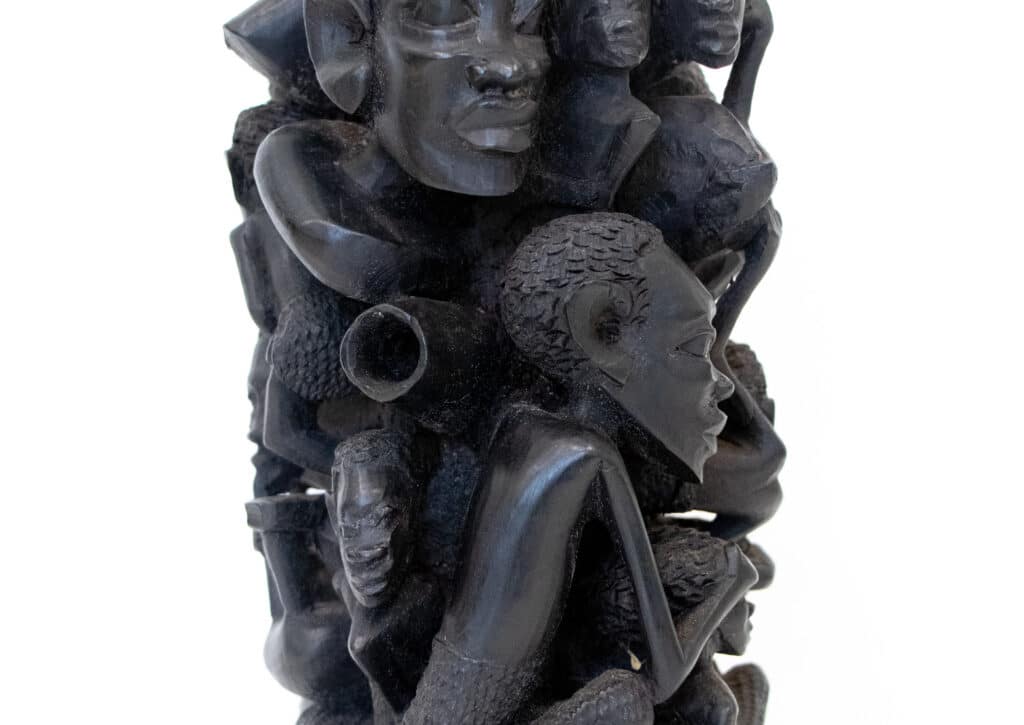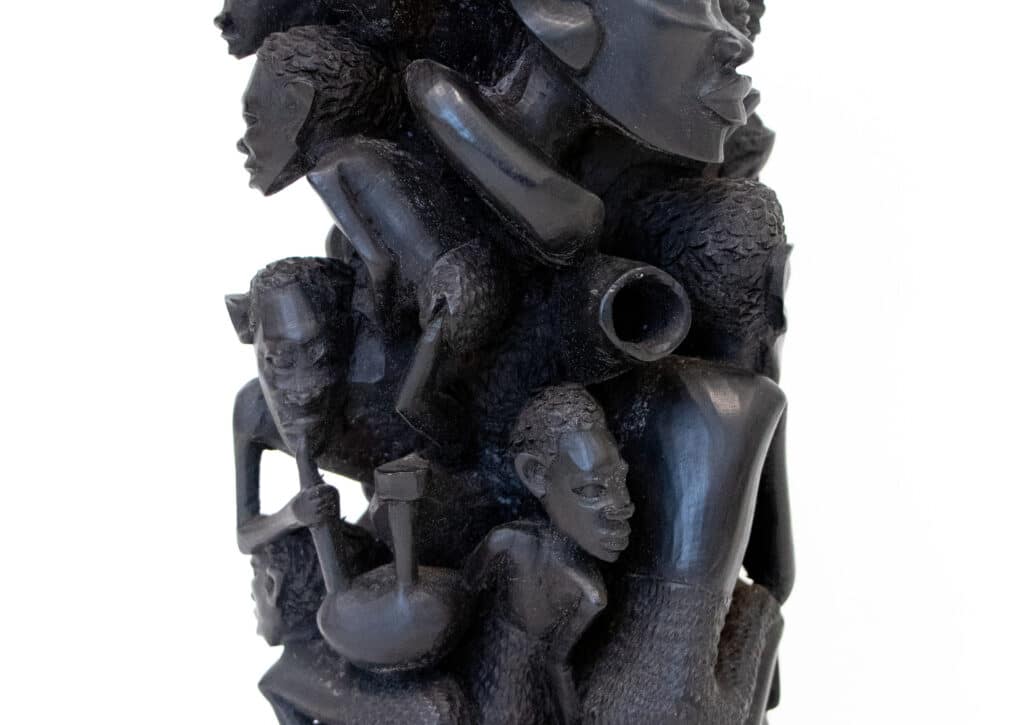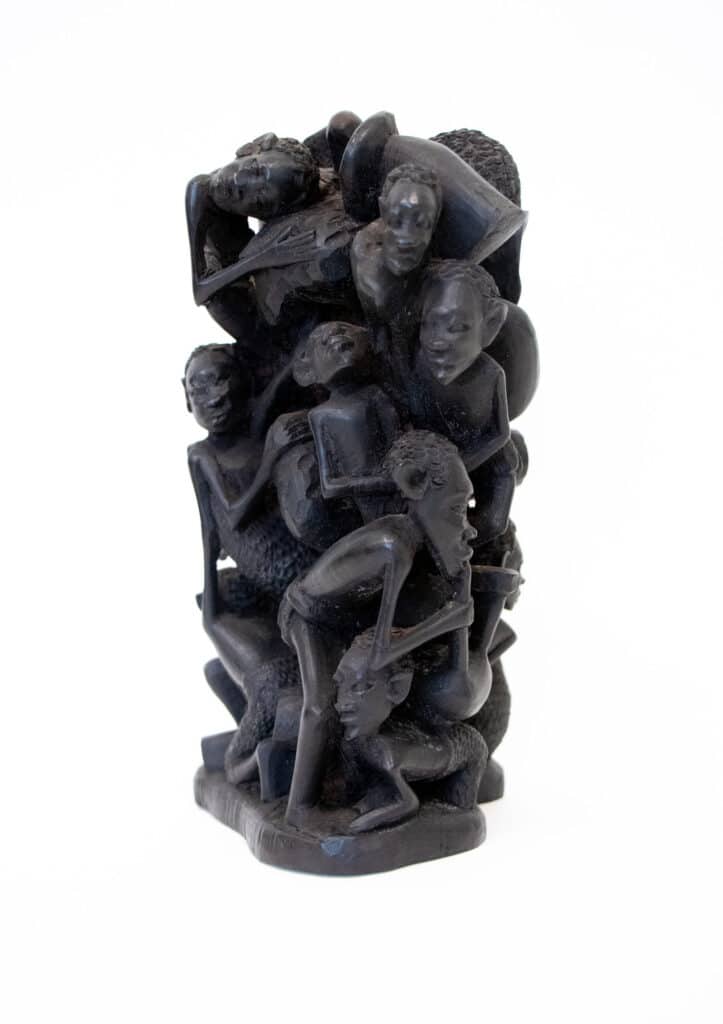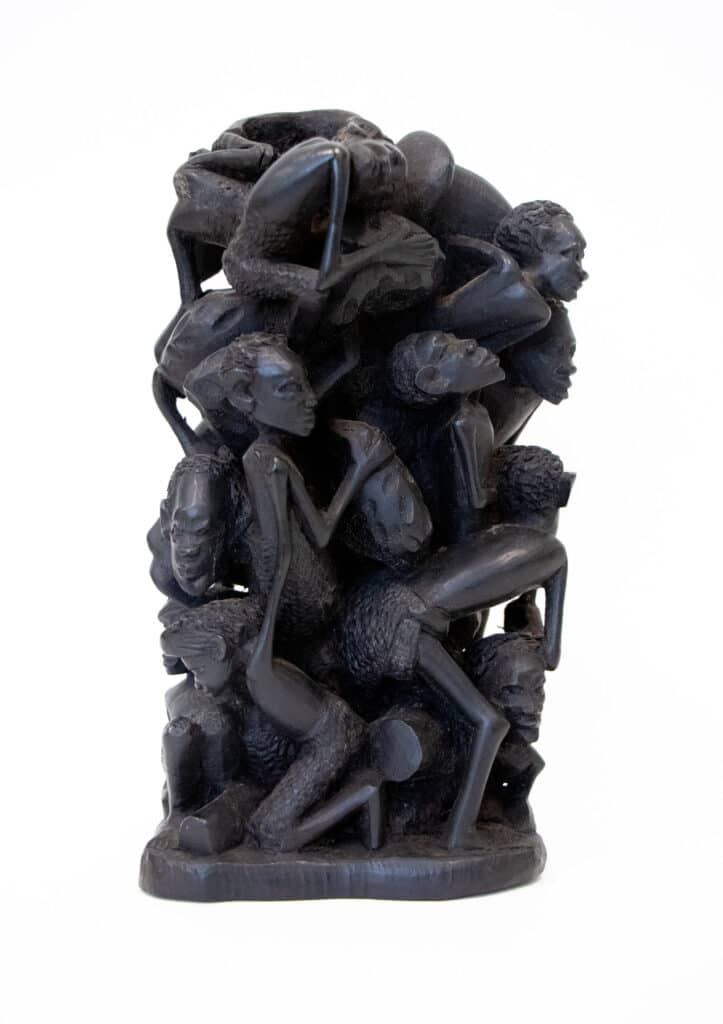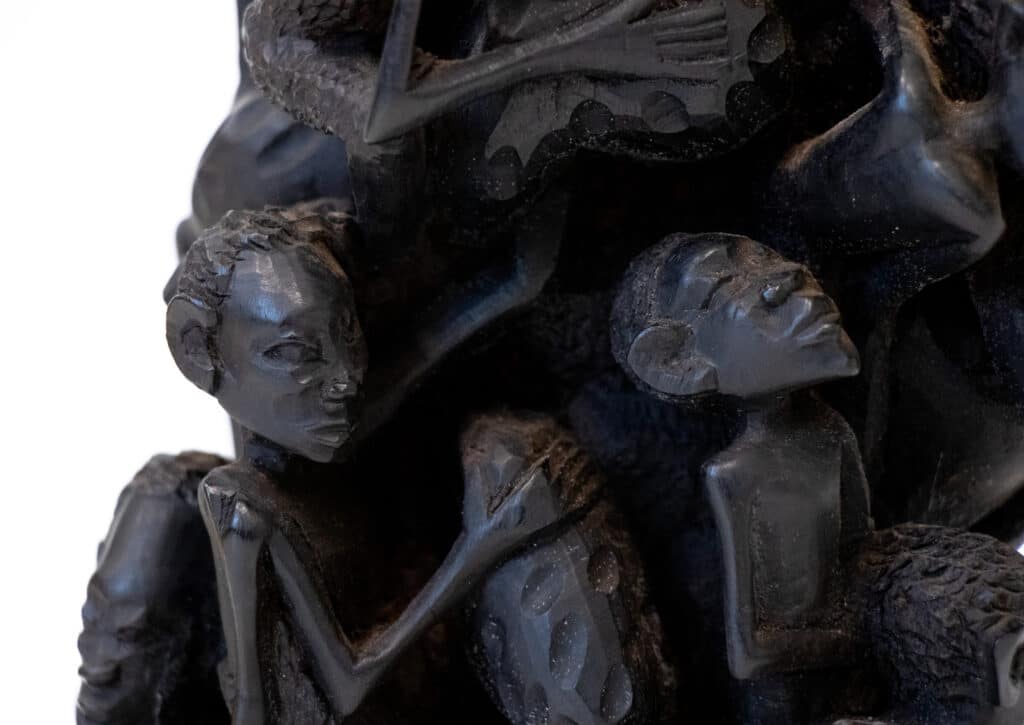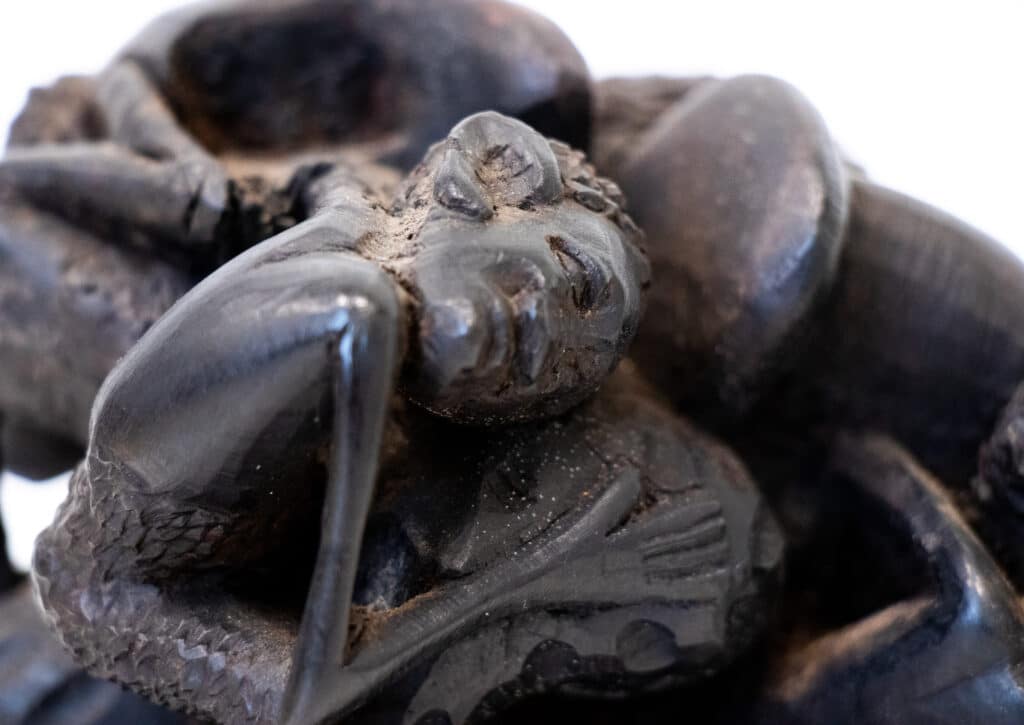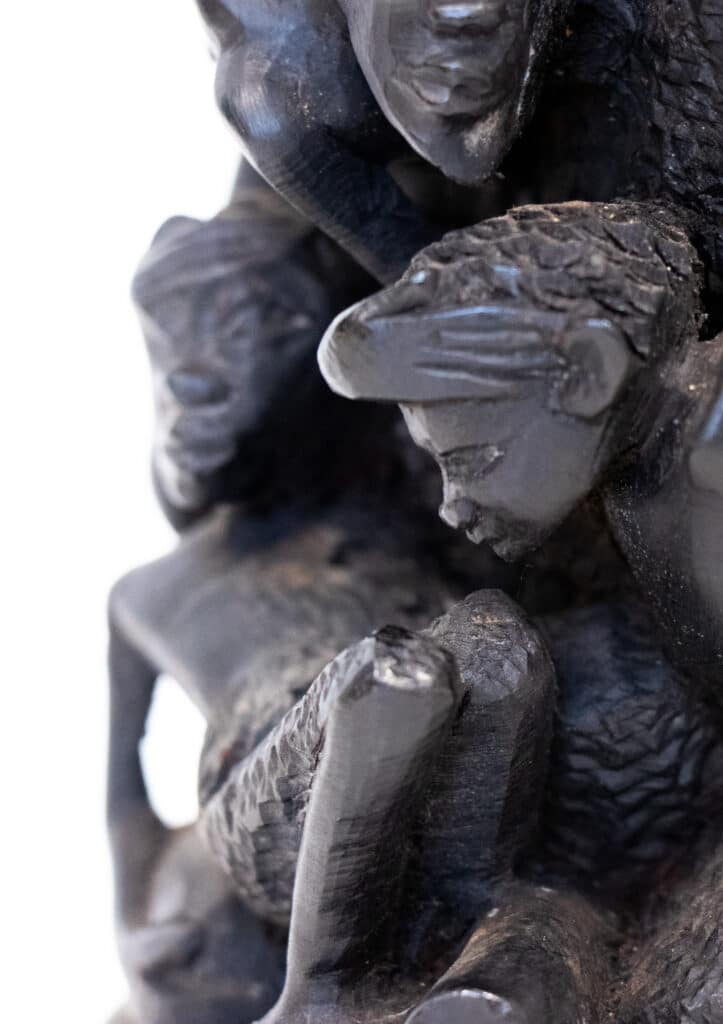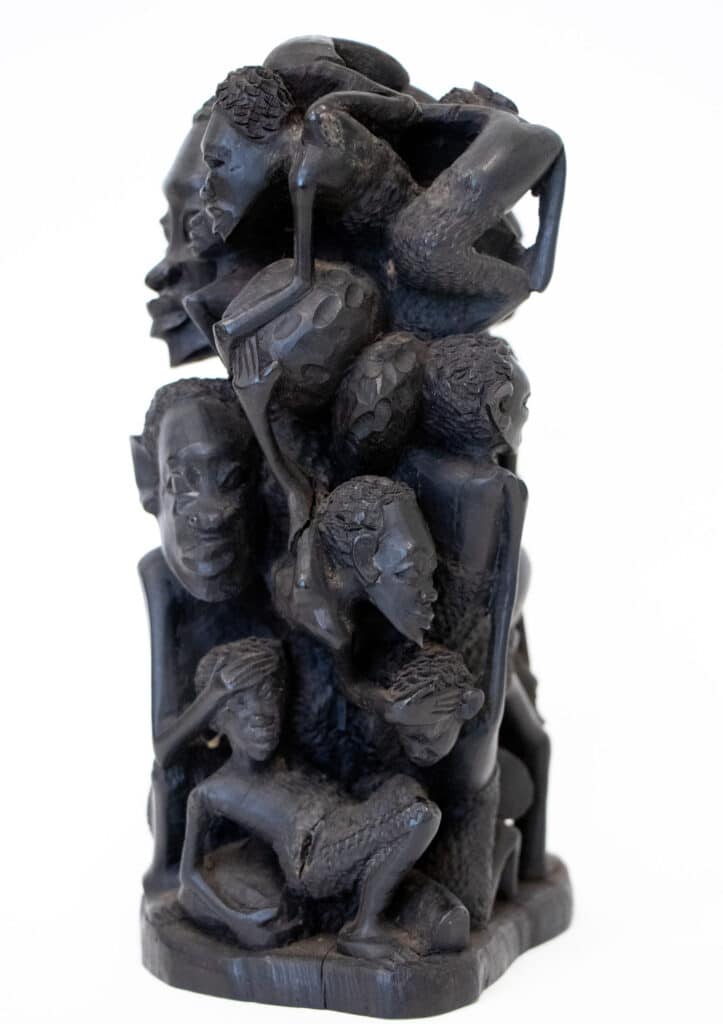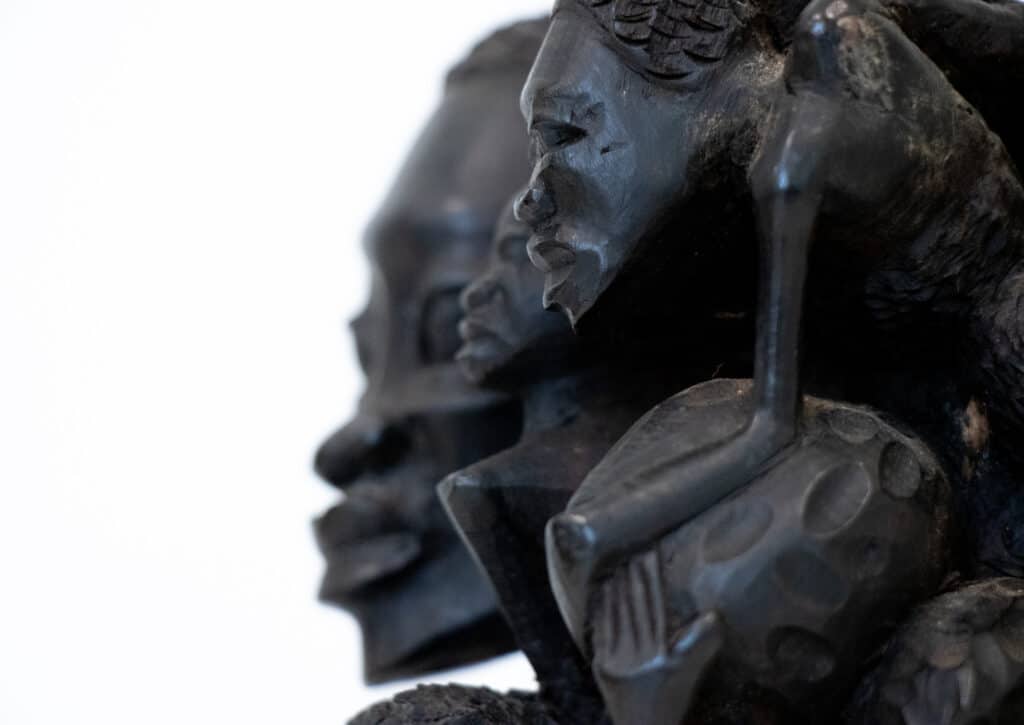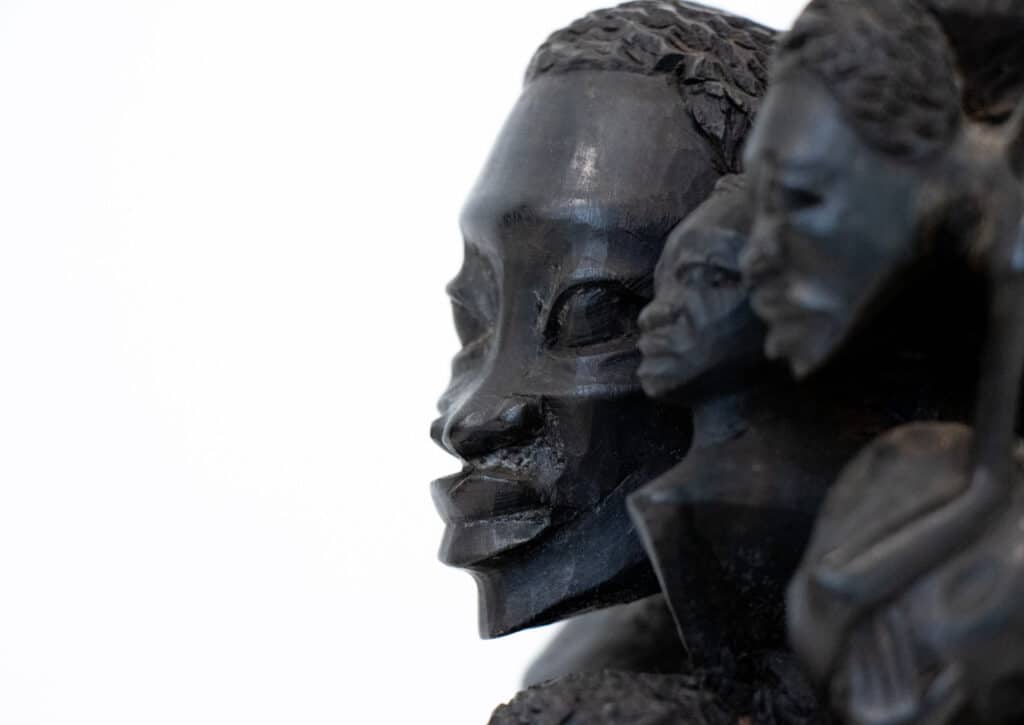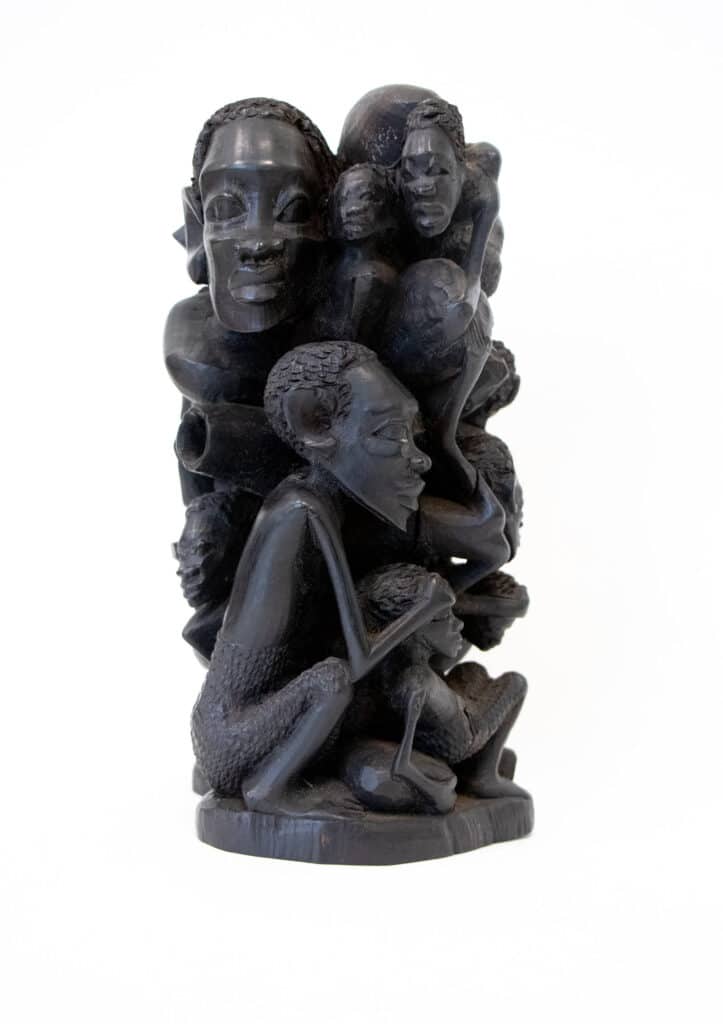about the work
The African Blackwood Project describes Tree of Life sculptures as “sculptures in the round that tell stories about the interrelations of family, tribal communities and larger social entities. Its intertwined figures symbolize connectedness and mutual assistance from generation to generation, with each built upon the one preceding.”
The dimoongo sculptures in Spartanburg Art Museum’s Permanent Collection were likely produced in a studio similar to Peera’s, specifically to be sold to tourists. They were donated in 1986 by the late Captain Paul G. Hellebrand, an officer in the Merchant Marines who likely purchased them on his extensive travels during his service in World War II, the Korean War, and the Vietnam War.
about the artist
The Makonde people of Mozambique, Africa lived fairly isolated from European colonialism until the end of World War I, when Portuguese colonists took over Mozambique in an attempt to defend against the Germans in Tanzania. After WWI, the Portuguese remained in Mozambique, imposing forced labor on the Makonde to pay off exorbitant taxes. By the end of World War II, many Makonde left the oppressive Portuguese regime for British Tanganyika (present-day United Republic of Tanzania) Though this was still colonized land, the Makonde people could earn sixty times the salary available in Portuguese Mozambique for their traditional woodcarving skills.
Mohammed Peera was a significant sponsor of Makonde art in Tanzania. He provided Makonde carvers with studio space to produce wood carvings as a way to support themselves and their families and encouraged creative freedom. Within only a few months, Peera’s studio had grown to over eighteen artisans. One of these artisans, Roberto Yacobo Sangwani, is credited with adapting traditional Makonde sculpture into modern dimoongo (also called ujamaa or Tree of Life) sculpture.
